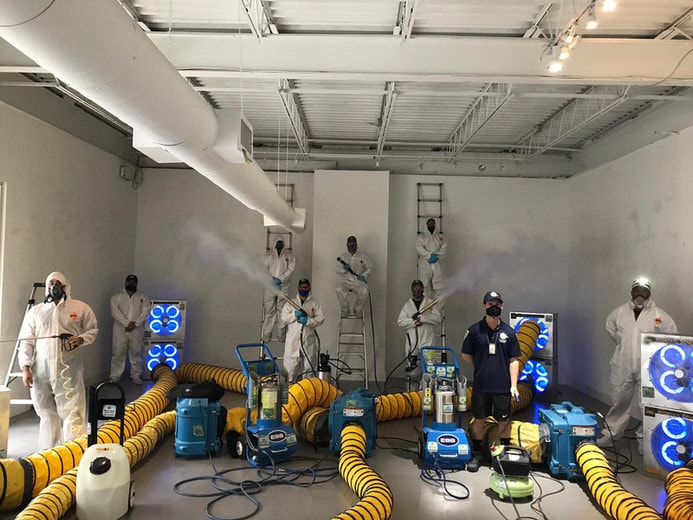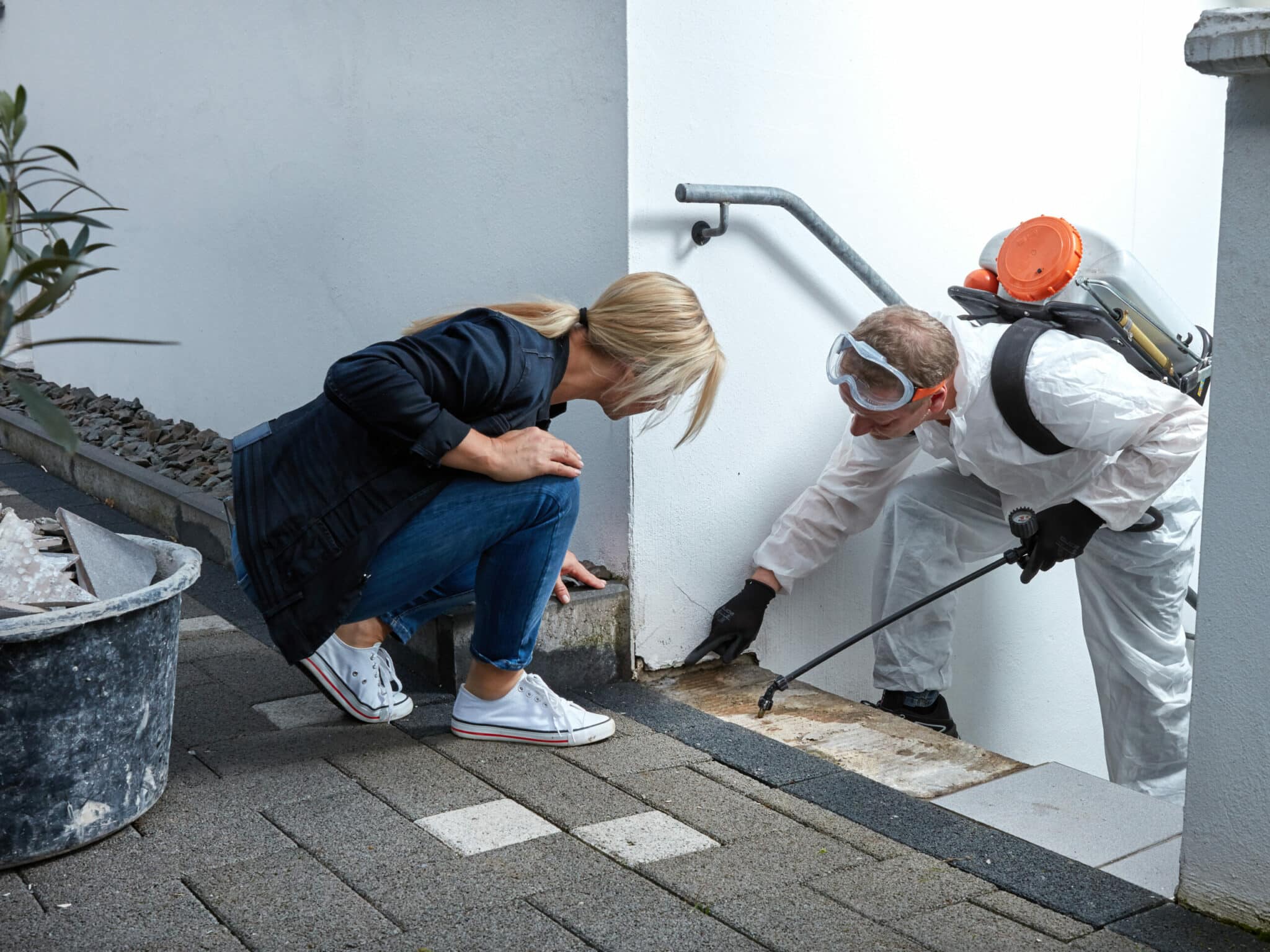Precision Mold And Mildew Remediation Techniques for Making Sure a Healthy Living Atmosphere
In the world of keeping a healthy living atmosphere, the efficacy of mold and mildew removal techniques stands as an important aspect that demands accuracy and expertise. Mold and mildew problems can be dangerous, affecting indoor air high quality and posturing threats to both property and health. Resolving mold and mildew growth exceeds mere surface cleaning; it demands a detailed method that includes analysis, targeted approaches, and the utilization of advanced innovations. By exploring the complexities of mold and mildew remediation methodologies, one can acquire insight into securing versus mold-related problems and fostering a healthier habitat.
Comprehending Mold And Mildew Development Factors
Understanding the key aspects that add to mold development is necessary in developing effective approaches for mold and mildew removal. Mold and mildew needs 3 primary components to flourish: wetness, ideal temperatures, and organic material for food. Wetness is probably the most crucial element as mold spores can promptly spread out and colonize in moist atmospheres. Leakages, floodings, high moisture degrees, or condensation offer the essential dampness for mold growth. Temperature level also plays a significant function, with the majority of mold and mildews liking temperature levels between 60-80 ° F(15-27 ° C) Finally, mold eats natural materials such as wood, paper, drywall, and textiles.

Evaluation of Mold And Mildew Infestations
Having determined the essential elements that contribute to mold growth, the next critical action is analyzing the level of mold and mildew infestations within a residential property. Mold and mildew assessment involves a comprehensive examination to establish the kind of mold and mildew present, the impacted locations, and the seriousness of the infestation. Professional mold and mildew assessors utilize a mix of aesthetic inspection, dampness meters, thermal imaging electronic cameras, and air sampling to gather information on the mold and mildew trouble.
Visual inspection is typically the primary step in analyzing mold and mildew infestations, where professionals aesthetically examine locations prone to mold and mildew growth, such as shower rooms, cellars, and attics. This helps identify visible mold and mildew growth and locations with indicators of water damages or high wetness levels. Dampness meters are after that utilized to detect dampness levels in building products, assisting in finding concealed mold growth behind ceilings or walls.
Additionally, thermal imaging electronic cameras can be utilized to spot temperature distinctions that might show wetness problems promoting mold and mildew growth. Air sampling is another crucial strategy utilized to collect airborne mold and mildew spores, supplying info on the focus and kinds of mold and mildew present in the interior setting. By using these assessment techniques, experts can properly evaluate the mold and mildew invasion and develop a reliable remediation strategy to make sure a healthy and balanced living environment.

Implementing Targeted Remediation Approaches
To efficiently resolve mold problems, executing targeted remediation strategies is essential for removing the source of mold and mildew growth and guaranteeing a mold-free setting. These strategies entail an organized strategy tailored to the particular mold problems determined during the evaluation stage. By targeting the underlying elements adding to mold and mildew growth, such as dampness intrusion, poor air flow, or structure material defects, removal initiatives can be a lot more precise and effective.
One targeted removal strategy is to resolve water leaks immediately to stop wetness build-up, which is a primary driver of mold and mildew spreading. This might involve fixing pipes leakages, boosting water drainage systems, or improving waterproofing procedures. In addition, enhancing ventilation in moist locations can help minimize humidity degrees, creating a setting less for mold and mildew development.
Furthermore, targeted remediation approaches may consist of eliminating and changing mold-infested materials, such as drywall or insulation, and using antimicrobial treatments to prevent future mold advancement. Routine monitoring and maintenance are critical to maintaining a mold-free atmosphere following remediation efforts - local mold remediation philadelphia. By implementing these targeted approaches, special info homeowner can successfully fight mold infestations and promote a much healthier living setting
Making Use Of Advanced Mold Elimination Technologies
Incorporating modern technologies is paramount in the effective elimination of mold and mildew invasions and guaranteeing long-term avoidance procedures. Advanced mold and mildew removal modern technologies play a critical role in resolving mold and mildew issues efficiently and thoroughly. One such innovation is using High-Efficiency Particulate Air (HEPA) purification systems. These systems can catch and strain mold and mildew spores and other airborne bits, dramatically reducing the spread of mold and mildew during removal.
Furthermore, advanced mold and mildew removal technologies include infrared electronic cameras that can discover hidden dampness resources within wall surfaces or ceilings, assisting in the accurate identification of locations vulnerable to mold development. mold removal philadelphia. This innovation enables remediation specialists to target affected areas extra properly, bring about a more thorough removal process
Ultraviolet (UV) light therapy is an additional innovative innovation made use of in mold and mildew removal. By leveraging these advanced innovations, mold and mildew remediation professionals can successfully eliminate mold invasions and develop a healthier living atmosphere for passengers.
Preventing Future Mold Recurrences
With the effective removal of mold and mildew infestations utilizing sophisticated modern technologies, the emphasis currently changes towards implementing robust strategies to prevent future mold reoccurrences. Stopping mold from reoccurring is vital for keeping a healthy indoor atmosphere.
Appropriate air flow is one more important facet of mold and mildew prevention. Guaranteeing adequate air movement in all areas of the structure can help in reducing humidity degrees and prevent wetness build-up. Using dehumidifiers in wet rooms such as cellars can additionally assist in controlling moisture levels.
Maintaining sanitation and immediately dealing with any kind of water damages or spills can even more help protect against mold and mildew growth. Normal cleaning routines need to include cleaning, vacuuming, and wiping down surface areas to avoid the accumulation of mold and mildew spores.
Educating occupants browse around here concerning mold and mildew prevention practices, such as appropriate air flow and wetness control, can also add to an aggressive technique in stopping future mold problems. By applying these approaches, the danger of mold and mildew reoccurrences can be dramatically minimized, leading to a healthier living atmosphere.
Verdict
By comprehending mold and mildew development variables, assessing infestations, executing targeted approaches, utilizing advanced elimination innovations, and avoiding future recurrences, one can efficiently fight mold problems. It is important to prioritize mold and mildew remediation to make sure the well-being of occupants try this web-site and stop potential wellness threats linked with mold and mildew exposure.

Comments on “Reliable Local Mold Remediation Philadelphia Providers for Effective Solutions”